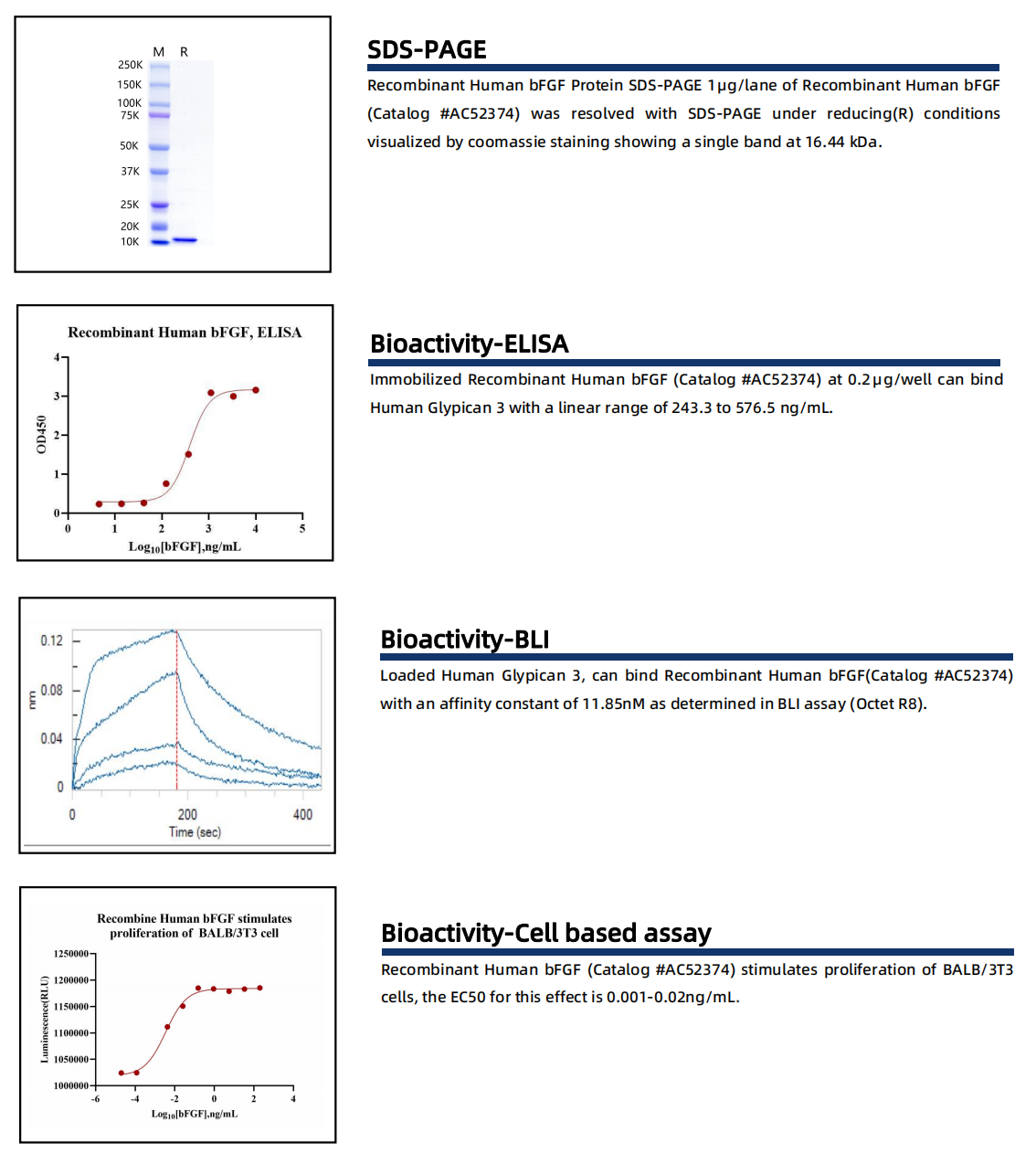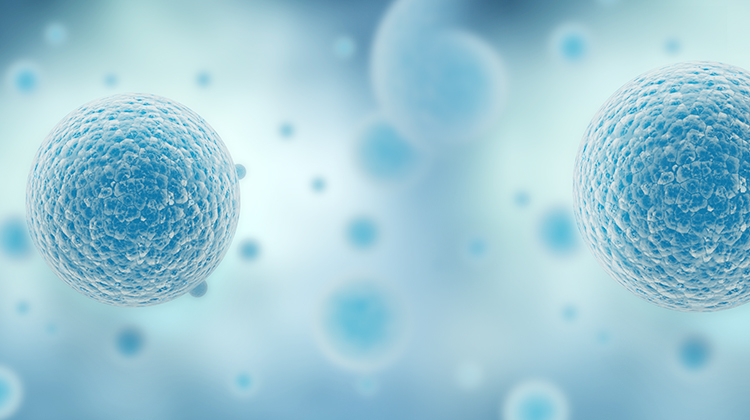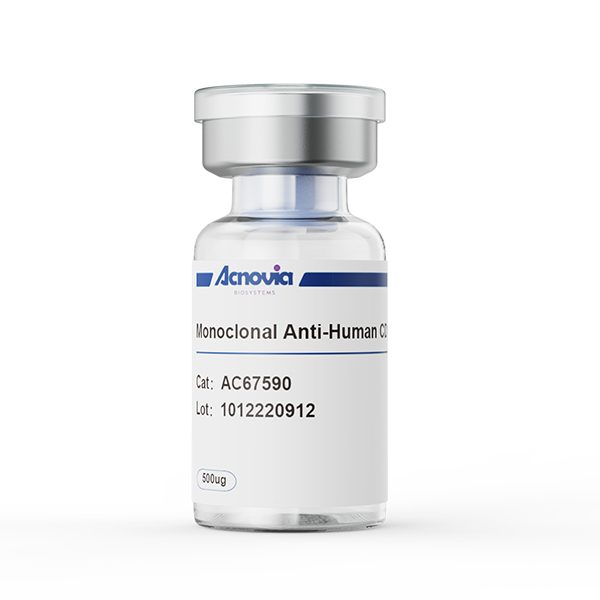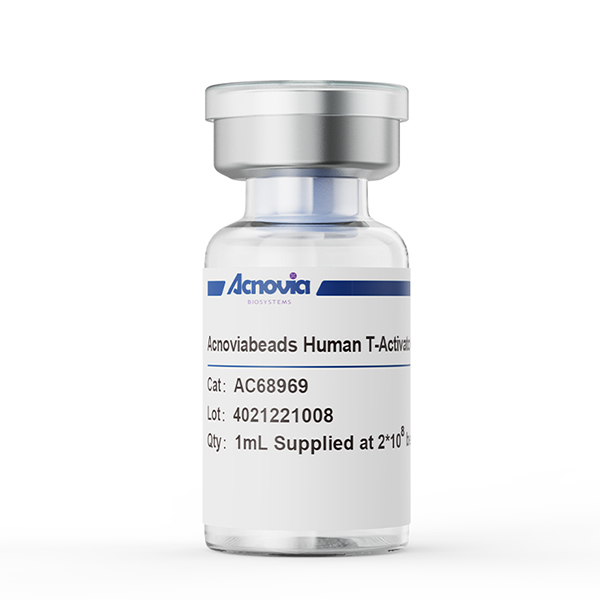
Catalog#/Size:AC52374/100 µg
Source:Escherichia coli
SDS-PAGE:16.44 kDa, reducing conditions.
Molecular Weight:Approximately 16 kDa, a single non-glycosylated polypeptide chain containing 146 amino acids.
-
100 μg
¥980.00
现货 -
1 mg
¥3980.00
现货
Catalog#/Size:AC52374/100 µg.
Source: Escherichia coli.
Molecular Weight: Approximately 16 kDa, a single non-glycosylated polypeptide chain containing 146 amino acids.
Description: Accession # NP_001997,Ala144-Ser288, with an N-terminal met.
SDS-PAGE: 16.44 kDa, reducing conditions.
Purity: >95%, as determined by SDS-PAGE, under reducing conditions, visualized by coomassie staining.
Endotoxin: Less than 0.01 EU/µg of rHuEGF as determined by kinetic Limulus Amoebocyte Lysate (LAL) assay.
Biological Activity: Recombinant Human rHubFGF (Catalog #AC52374) stimulates proliferation of BALB/3T3 cells, the EC50 for this effect is 0.001-0.02 ng/mL.
Physical Appearance: Sterile Filtered White lyophilized (freeze-dried) powder.
Formulation: Lyophilized from a 0.2 µm filtered concentrated solution in 10 mM PBS, pH 7.5 without carrier protein or preservatives.
Reconstitution: We recommend that this vial be briefly centrifuged prior to opening to bring the contents to the bottom. Reconstitute to a concentration of 0.1-1.0 mg/mL in sterile distilled H2O. Stock solutions should be apportioned into working aliquots and stored at-20 ℃ to -70 ℃. Further dilutions should be made in appropriate buffered solutions. Do not reconstitute in cell culture media directly.
Shipping: The product is shipped at 2℃to 8℃. Upon receipt, store it immediately at the temperature recommended below.
Stability & Storage: Use a manual defrost freezer and avoid repeated freeze-thaw cycles.
A minimum of 12 months from date of shipping when stored at -20℃ to -70℃ as supplied.
4 weeks at 2 ℃ to 8 ℃ under sterile conditions after reconstitution.
4 months at -20 ℃ to -70 ℃ under sterile conditions after reconstitution.
Usage: Acnovia rHubFGF product can be used for a variety of ex vivo cell culture applications such as research or further manufacturing.
Quality statement: No animal- or human-derived materials were used for the manufacture of this product, unless otherwise stated in the respective Certificate of Origin.
Basic Fibroblast Growth Factor (FGF), also known as FGF-2 and HBGF-2, is a member of the FGF superfamily of molecules. This molecule is characterized by the presence of a centrally placed beta-trefoil structure. FGF acidic (FGF-1) and FGF basic (FGF-2) were the first two identified FGFs, and the designations acidic and basic refer to their relative isoelectric points.
Human FGF basic is 288 amino acids in length and has multiple start sites, four of which utilize atypical CUG codons, and one that initiates at an AUG start site. The four CUG start sites generate high molecular weight (HMW) FGF basic. There is a 34 kDa, 288 aa form, a 24 kDa, 210 aa form, a 22.5 kDa, 201 aa form, and a 22 kDa, 196 aa form.. It is secreted directly through the plasma membrane via a mechanism that appears to be dependent upon tertiary structure.
FGF basic plays a crucial role in angiogenesis, wound healing, embryonic development, and tissue repair. It is involved in the regulation of cell growth, differentiation, and migration. FGF basic interacts with heparin sulfate proteoglycans to activate signaling pathways such as the mitogen-activated protein kinase (MAPK) pathway and the phosphatidylinositol-3-kinase (PI3K) pathway. These pathways regulate cell proliferation, survival, and differentiation. FGF basic also regulates the expression of matrix metalloproteinases (MMPs) and tissue inhibitors of metalloproteinases (TIMPs), which are involved in extracellular matrix remodeling.
1. Nugent, M.A. and R.V. Lozzo (2000) Int. J. Biochem. Cell Biol. 32:115.
2. Abraham, J.A. et al. (1986) EMBO J. 5:2523.
3. Prats, H. et al. (1989) Proc. Natl. Acad. Sci. USA 86:1836.
4. Foletti, A. et al. (2003) Cell. Mol. Life Sci. 60:2254.
5. Pintucci, G. et al. (1996) Mol. Biol. Cell 7:1249.





 CN
CN









 细胞治疗
细胞治疗
 基因治疗
基因治疗
 mRNA治疗
mRNA治疗






 产品说明书
产品说明书 试用装
试用装
 0571-86963020
0571-86963020




